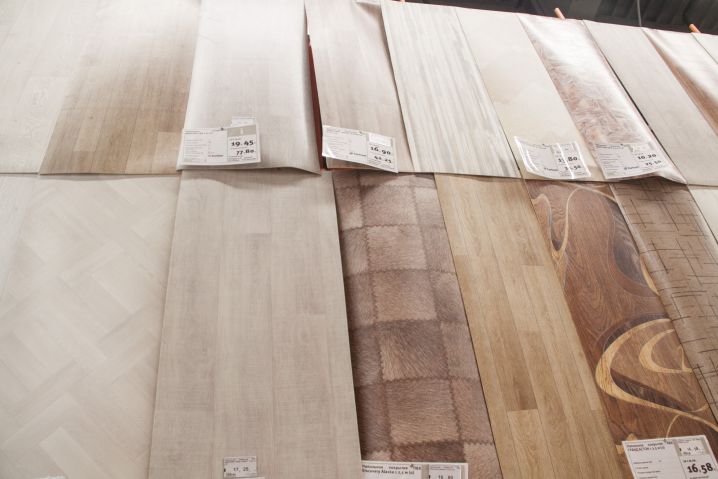How to choose the right linoleum for the kitchen: designer's advice so you don't regret it later
The kitchen is a living area that is subject to maximum operational loads, since it is often used not only as a room for cooking, but also as a dining room.
Such multifunctionality of the premises obliges us to pay attention not only to operational properties, but also to aesthetic characteristics when choosing finishing materials.
Using linoleum as a floor covering in the kitchen is an ideal option for combining beauty, convenience and high technical requirements, says Yulia Tychino .
Linoleum is waterproof, shockproof, easy to install and operate, and has a huge range of design solutions, expressed in a wide range of colors and textures.
The service life of the material is 10-15 years. Compared to other floor coverings, linoleum seems to be quite economical, but it is worth considering that, having a polymer structure, it is vulnerable to mechanical damage, which is practically impossible to eliminate in the future.

Types of linoleum are divided into several groups:
- Household - used in finishing residential buildings
- Commercial – for finishing commercial premises
- Industrial – high-strength material used in production areas.
There are also degrees of material resistance according to the following categories:
- Short
- Average
- High
- Maximum
Another characteristic of linoleum adopted by manufacturers is the wear resistance index, determined by numbers from 21 to 43.
The degree of wear resistance is determined in ascending order - the higher the index, the more durable the material.
For kitchens, the ideal option would be linoleum of wear resistance class 21-33.
It is reasonable to choose the color scheme against the background of the overall stylistic solution, but the most popular colors in this environment are those that imitate natural materials, such as floorboards and stone. Options with patterns and ornaments are also in demand.
During installation, the floor covering is supplemented with accessories - baseboards, sides, pressure rails. This should not be forgotten when purchasing the material and it is better to purchase components together with the covering in order to select the overall color scheme on site, which will later be harmoniously combined in the interior.
It is not advisable to choose the color of linoleum to match the furniture or curtains, as such a combination leads to an overall imbalance in the color composition.
As a rule, linoleum is packed in rolls, 2-5 m wide, and sold by the meter.
The thickness of the coating is another important property. Due to the thickness, you can arrange additional sound insulation or insulate the base of the floor on which the linoleum is laid, but at the same time, you should keep in mind that the wear resistance of the material depends solely on the top layer of the material. The standard coating thickness for the kitchen is 3 mm.
The quality of the linoleum depends on both the appearance of the room and the durability of the repair, but the period of use can also affect the service life of the material, which means you need to remember the rules for its use:
1. To avoid material sagging, it is recommended to use furniture with wide legs.
2. It is not advisable to drag things across such a floor, as this may cause scratches and cracks.
3. It is important to remove dirt from the floor in a timely manner, without using abrasive materials or bleaches.
4. Open seams should be protected from moisture.
In case of effective selection of material, correct installation and competent use, linoleum can become an excellent replacement for parquet, laminated flooring and ceramic tiles, while perfectly fitting into even the most modest budget.
Earlier we wrote about what details in the hallway will make the interior visually more expensive.
